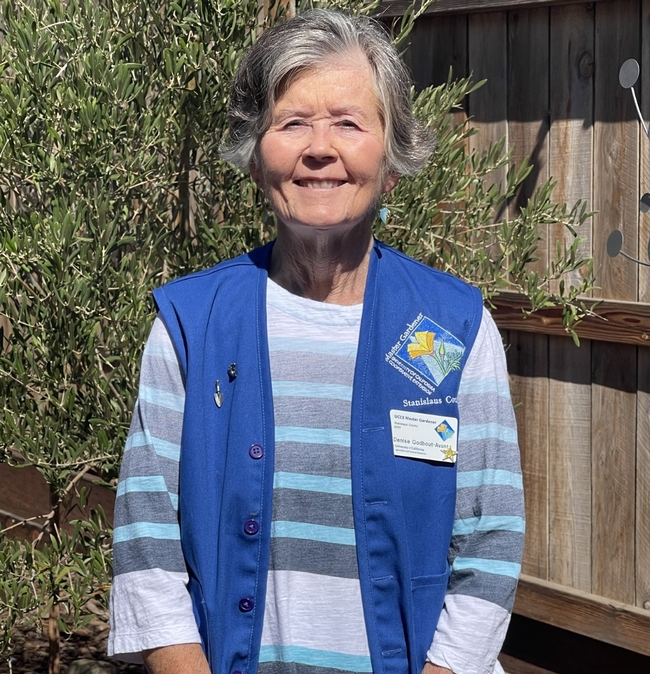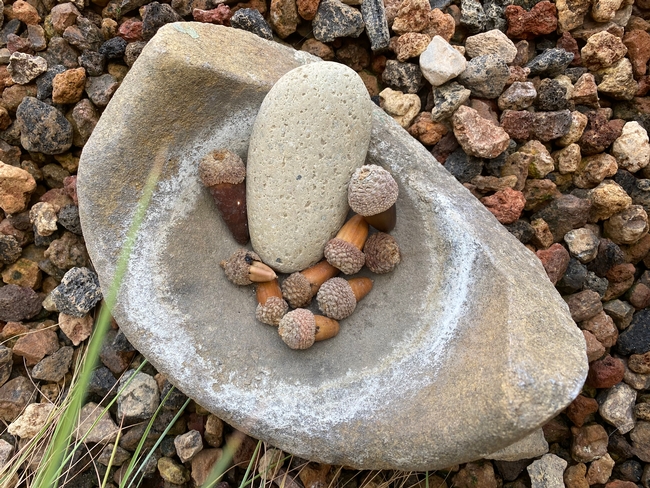
Valley Oak (Querus lobata):
The acorns were a staple food, which was leached (rinsed with water) to remove the bitterness, and ground into flour with mortar and pestles. The ground acorns were used in stews/soups, pancakes/tortillas, mush, or layered into pits and cooked with other plants and meats. Oak galls were squeezed to make a blue-black ink for tattoos and tannins were used to make dyes and decorate animal skins.
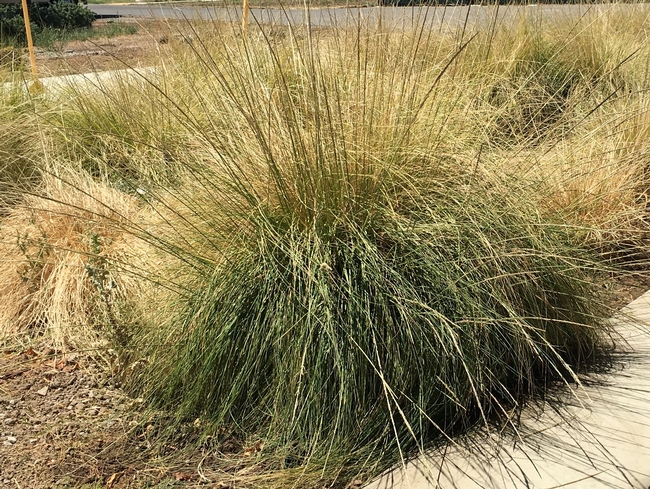
Deer Grass (Muhlenbergia rigens):
A major grass for creating beautiful, sometimes water-tight baskets to cook food, to carry and store food and other items. Stalks were generally harvested in the spring when easy to pick, then wrapped to keep straight and allowed to cure for a year. They were often soaked prior to weaving into basket. About 1600 stalks would be needed to make one basket.
One of the most beautiful California grasses, this easy-to-grow plant attracts butterflies in the spring with its cream-colored flowers and seed-eating birds in the summer.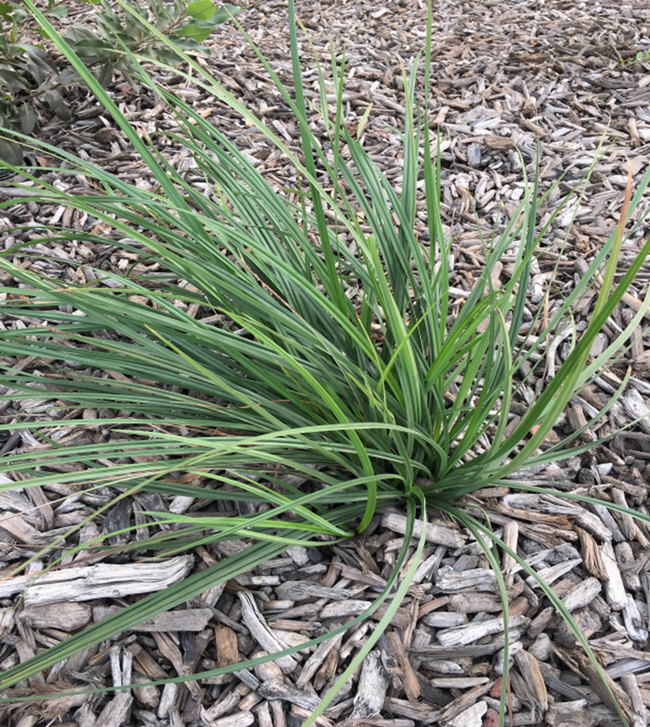
Santa Barbara Sedge (Carex barbarae):
The rhizomes (underground stems which generally grow horizontally) provided the strongest threads for basket making. The people would manage the rhizome growth by cleaning the soil of anything that might obstruct the growth (i.e., rocks) to allow the rhizomes to grow long and straight. An evergreen grass, the summer flowers range from cream, red and purple colors, which attract butterflies.
Toyon, aka California Holly (Heteromeles arbutifolia):
The wood from this sturdy shrub had many uses including tools, games/toys, fuel for smoking fish, and religious ceremonies. The red berries produced in the fall which were eaten after roasting over coals or dried in the sun.
An evergreen shrub, the summer white flowers attract bees and butterflies. Birds love the berries.
Blue Elderberry (Sambucus cerulea):
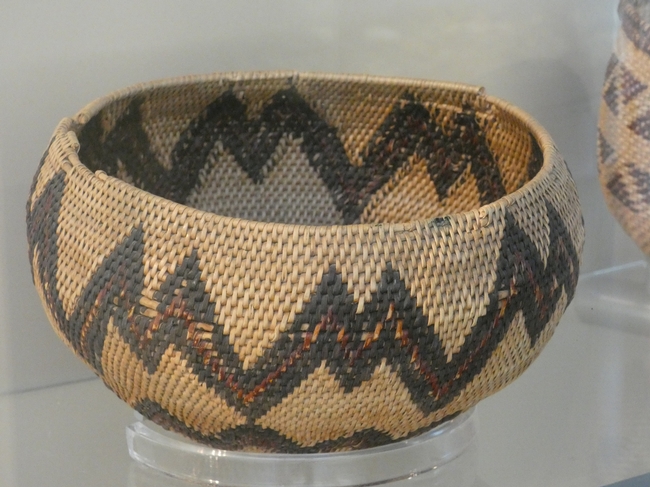
This tough, easy-to-grow shrub or tree is dormant in the winter. The spring and summer blooming cream or yellow flowers attract bees and butterflies, with their berries being an important food source to many birds.
Manzanita (Arctostaphylos manzanita):
Its distinctive red wood which was sometimes used to dry and smoke fish. The fruit was gathered in summer, then dried and ground to make coarse meal which would be mixed with a little water during winter months or made biscuits. They would make tea with the berries and tips of the branches, which apparently was a pleasant drink.
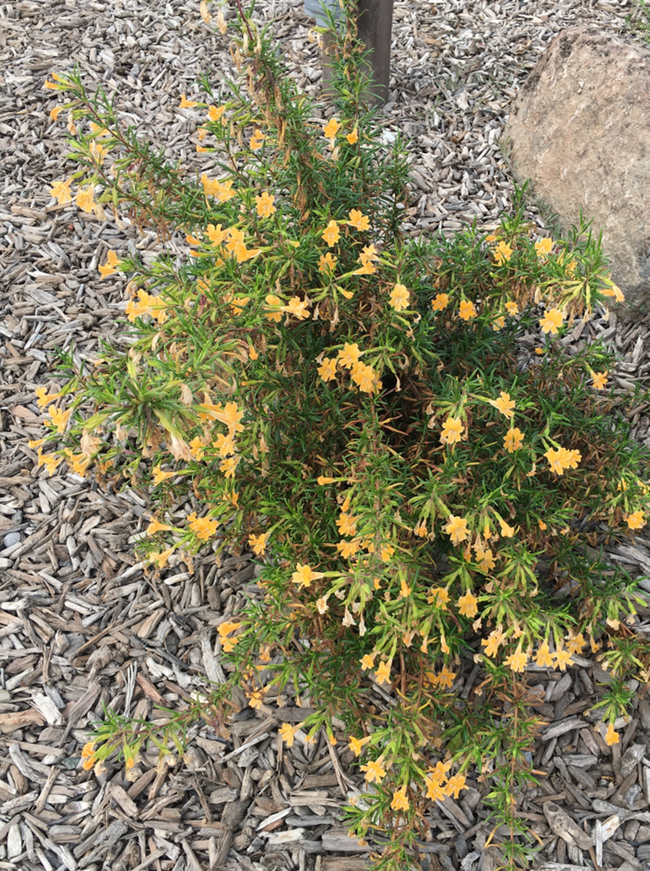
Sticky Monkey Flower (Mimulus aurantiacus):
The seeds were used as a food source. They were gathered, parched, ground, and added to foods or eaten by the handful. Flowers were used as décor after drying, made into wreaths, and used in religious ceremonies. The roots and leaves were used for medicinal purposes.
This drought-tolerant, evergreen shrub blooms in the spring, summer, and fall. The bright yellow tubular flowers attract hummingbirds, bees, and butterflies. Autumn seeds attract small birds.
Whenever I see any of these California native plants, I think of how the indigenous people of California used these plants over thousands of years. By growing them in our gardens, we honor that history, help the survival of these plants which provide food sources for so many birds, bees, and butterflies, reduce water usage, bring variety to our gardens, and joy to our spirits with their beauty.
Learn more at the Library - Take a free class!
This September, our UC Master Gardeners will present on the topic, "CA Native Plants" at 9 Stanislaus County Library locations. Visit our Calendar at https://ucanr.edu/sites/stancountymg/Calendar/ for dates, times, and locations.
Upcoming Workshop
On Saturday, October 7, 2023, we are offering our "The New Front Yard" workshop. Topics include drip irrigation, converting your yard to native plants, and how to garden for year-round bloom! Stay tuned for the registration announcement.
Resources:
- Enough For All: Foods of My Dry Creek Pomo and Bodega Miwuk People by Kathleen Rose Smith
- The Real California Cuisine: A Treatise on California Native-Plant Foods by Judith Larner Lowry
- Tending the Wild: Native American Knowledge and the Management of California's Natural Resources by M. Kat Anderson
- Indian Summer: A True Account of Traditional Life Among the Choinumni Indians of California's San Joaquin Valley
- Great Valley Museum of Natural History at Modesto Junior College's exhibit on Yokuts
- California Native Plant Society: https://www.calscape.org/
Acknowledgment: Lillian Vallee, English professor emeritus, Modesto Junior College, who has shared her passion and knowledge with me over the years of California native plants and their historical uses by the California native people.
Denise Godbout-Avant has been a UC Cooperative Extension Master Gardener in Stanislaus County since 2020.
- Author: Anne E Schellman
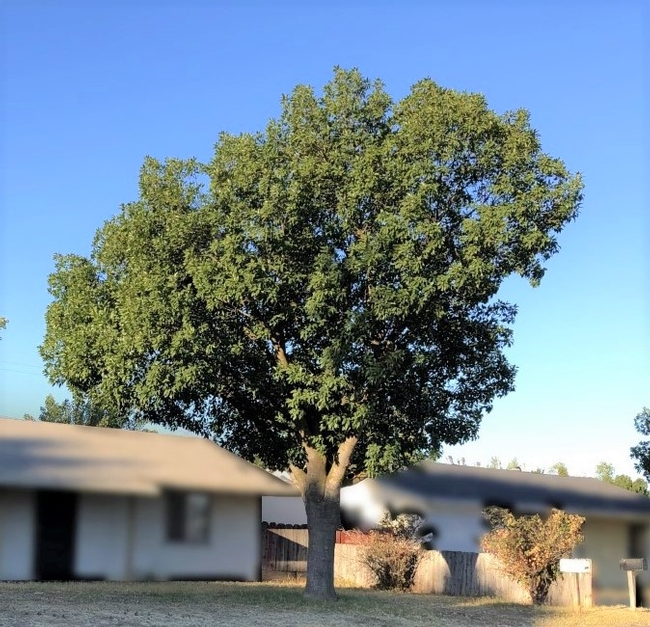
The Benefits of Trees
Trees provide so much more than shade. Here are a few reasons trees are important, courtesy of the International Society of Arboriculture (ISA):
- Air-conditioning costs are lower in tree-shaded homes & businesses; heating costs are reduced.
- In workplaces with trees, people report decreased workplace stress and fatigue.
- Cleaner air: leaves filter the air we breathe by removing dust and other particles.
- Cooler environment: trees reduce heat in and around parking lots and paved areas.
Trees and the Drought
California residents are being asked to lower their water use by 15%. One easy way to do this is to turn off your sprinklers. But wait! What happens to the trees? Although they may look okay for now, the stress of going without water will take a toll. Lawns can be easily replanted and replaced, but trees take many years to become established.
What do Trees Need?
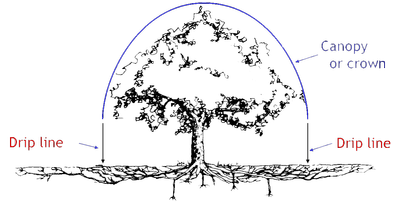
How Should I Water My Tree?
There is no “silver bullet” on how often or how much to water. This depends on many factors. Instead, after you water, take a shovel (away from tree roots) and check your soil. How deep did the water penetrate? Make sure water penetrates to a depth of 18” by digging with a shovel. Once that area is dry, water again.
Prioritize Watering Trees with the TRIC
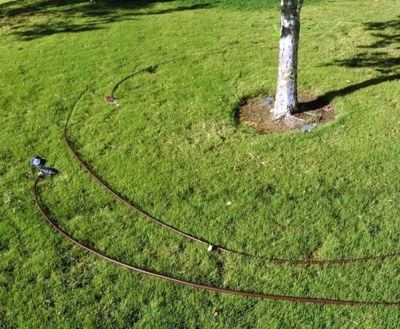
For more information about the value of trees, visit the following resources.
Resources
California Center for Urban Horticulture. UC Davis. Tree Ring Irrigation Contraption. https://ccuh.ucdavis.edu/tric
International Society of Arboriculture (ISA). Trees are Good. https://www.treesaregood.org/Portals/0/TreesAreGood_Benefits%20of%20Trees_0321_1.pdf
Water Talk. Janet Hartin. Podcast Episode 21. https://water-talk.squarespace.com/episodes/episode-21
This article was originally published on July 26, 2021.
- Author: Denise Godbout-Avant
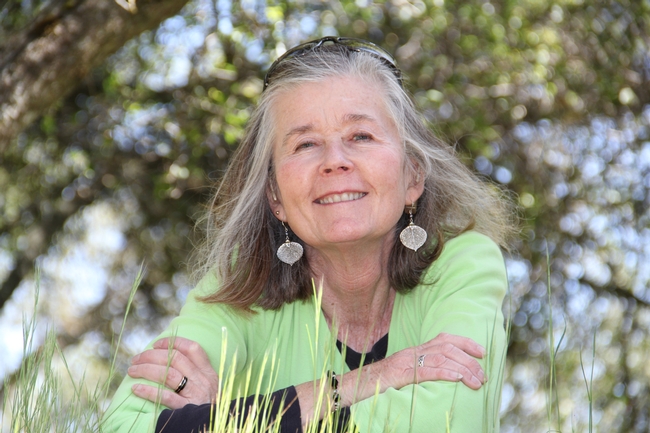
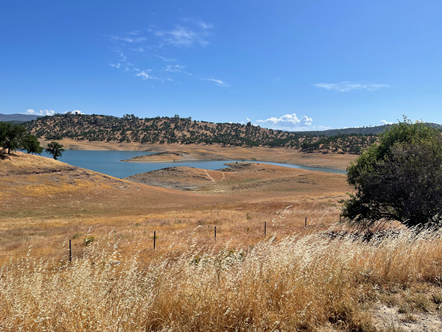
Whenever a drought happens in California, most of us look for ways to conserve water in our gardens and home. However, with droughts becoming the norm, rather than the exception, practicing water sustainability needs to become a way of life.
How can we conserve water in our daily lives? Our gardens are a good place to start, since about half of urban water is used for outdoor irrigation. The following are some suggestions which can have an impact on the amount of water you use in your gardens.
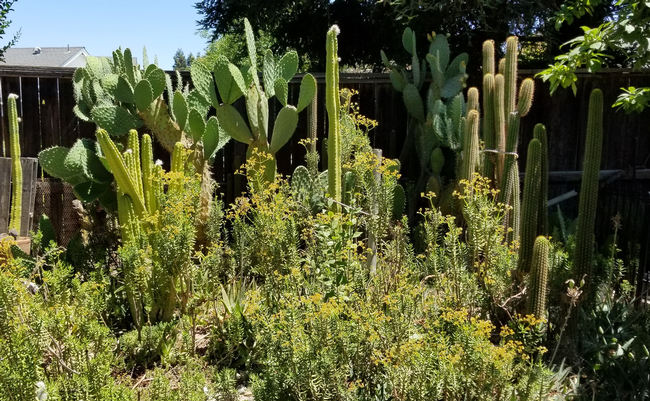
Practice water-wise garden irrigation by changing sprayers to drip system whenever possible, since sprayers decreases the amount of water going to your plants due to evaporation. Water according to the season, reducing or eliminating watering during the cooler, wet winter months – investing in a water timer with a rain sensor can help with this. Water early in the morning or late in the day when temperatures are cooler. Check your irrigation system regularly to check for leaks, repairing or replacing as needed.
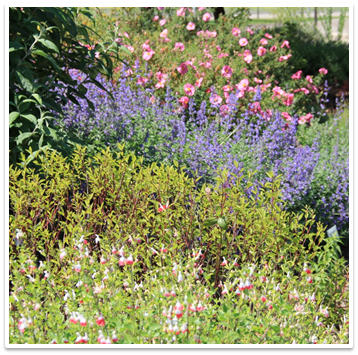
Plant water-wise plants that need little water once established. The above link will provide you with many suggestions. Another wonderful source of plant information is the UC Davis Arboretum All-Stars: https://arboretum.ucdavis.edu/arboretum-all-stars
There are ways to reduce our water use in our homes also, including having a water-efficient washing machine, dishwasher, shower and toilet, and not letting the faucet run while shaving, brushing our teeth, or washing our hands.
These are a few of the many ways we can make being water-wise a way of life in our gardens and homes. Every drop of water counts!
To learn more about our water and ways to use it wisely, join the UCCE Stanislaus County Master Gardeners on Tuesday, June 29th at 6:00pm on Zoom for our talk “Water-wise Tips for Your Garden and Home.” You can sign up at: http://ucanr.edu/water-wise/2021
- Author: Ed Perry
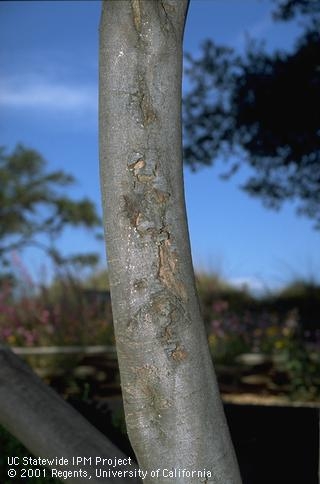
Sunburn is damage to leaves and other plant parts caused by a combination of too much light and heat and insufficient moisture. The first symptom of this problem may be leaves that appear dull or wilted. A yellow or brown “burned” area develops on the leaves, which then dies beginning in areas between the veins.
The best way to avoid sunburn is to choose plants that are adapted to the planting site. Trying to grow shade-loving plants in full sun is asking for sunburn problems. But even sun-loving plants will suffer sunburning of leaves if the plants are growing in dry soil. You need to provide your plants adequate irrigation water to prevent most sunburning problems. If you notice the symptoms early enough, you may be able to restore the color to sunburned leaves before they killed.
Sunscald, also sometimes called sunburn, is damage to tree or shrub bark caused by hot sunshine. Sunscalded bark becomes cracked and sunken, and is susceptible to attack by wood-boring insects and wood-rotting fungi. In fact, I almost always find evidence of flatheaded borer injury in trees that have sunscalded bark. Sunscalded trunks and limbs can develop cankers, become girdled, and die.
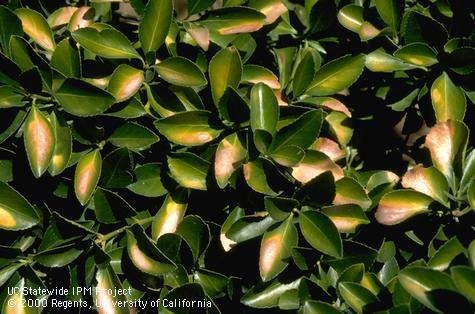
Sunscald often occurs on young woody plants. Their bark is thin and may not tolerate exposure to direct sun because they were grown in nurseries where their trunks were shaded. Older trees can be damaged if you expose branches to the hot sun by pruning heavily, especially during the summer months. Removing taller trees that provided shade, or adding pavement or buildings that reflect light onto plants can also lead to sunscald. Even in well-watered soil, sunscald may injure bark if plant roots are unable to absorb enough moisture when it's hot.
You can prevent sunscald through proper planting and pruning. Prune newly planted landscape trees very little or not at all. Leaves not only shade the bark, but manufacture foods necessary for root growth. If there is no foliage growing along the trunk of a newly planted tree, paint the trunk with white interior latex paint, diluted 50 percent with water. Old bark that has been recently exposed to the sun by pruning or limb breakage can also be painted white. Wood chips and other organic mulches can reduce reflected heat and light, thereby reducing the danger of sunscald.
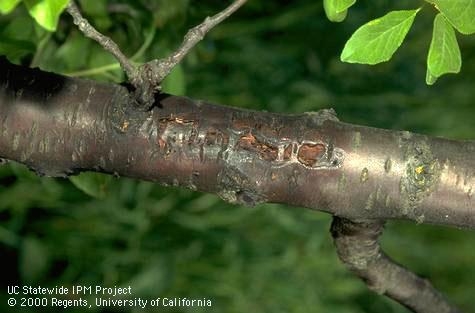
As always, it's important to plant species that are well adapted to the amount of light available in your garden. Also, avoid changing the environment in any way that significantly changes the amount of light your established plants are receiving.
Ed Perry is the emeritus Environmental Horticultural Advisor for University of California Cooperative Extension (UCCE) in Stanislaus County where he worked for over 30 years.

